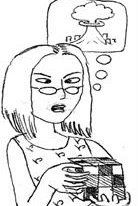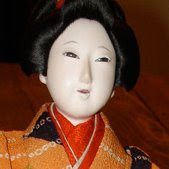
I've been too po' and too lazy to get a membership to the Stanford library so that I can look at their new Egyptology books. and so I've been trolling ebay for old Egyptology books and periodicals. I've met with some success, though I've had to dig through piles of occult books, biblical "history" books, etc. I've found a few gems which I'm going to summarize here occasionally. I find it really hard to find any sort of interesting Egyptology content with sufficient depth on the internet (aside from the Egyptology blog to which I link on the left.), and my intent is to perhaps enhance the little that is available without too much of my own unprofessional opining.
Recently, an ebay member listed a bunch of back issues of The Journal of Egyptian Archaeology. These are really a treasure trove of information...and they're fun to read in the bathtub. The below is a summary of some of the more interesting articles.
Journal of Egyptian Archaeology Volume 74 (1988)
I like to start with the briefs in the back because those are short enough for me to read in the bathtub. There were a lot of "first publishings" of collected Ushabtis by their private collectors here, and one guy speculating on the origin of a statue that looked like the crap that gets listed under "antiquities" on ebay. (Ok. End snarky opinions here!) John H. Taylor discusses coffin fragment depicting part of the name of a formerly unknown daughter of the 22nd dynasty high priest of Amun and self-styled "king" Hariese, whose name can be theoretically reconstructed as Taditanebethen. This is a pretty odd name and isn't attested outside the 3rd intermediate period. The name probably means "The one whom the Lady of the Chest/Box has Given". The lady of the Chest/Box is the goddess Nut who gives birth to the sun every morning and is therefore similar to a coffin which gives birth to the resurrected occupant. This strikes me as a bit of a macabre thing to name your daughter, but ok.
Also, in the 3rd intermediate period, Andrzej Niwinski discusses the wives of Pinudjem II, another high priest of Amun in Thebes. Niwinski equates this position of priest/city-state-king with the Pope, which I think is pretty accurate. It's traditionally believed that Pinudjem was initially married to a lady named Nesikhons, who was his niece, and after her death was remarried to a woman named Isetemkheb. However, the mummy of Nesikhons, found in the cache at Deir El Bahri (DB320), was buried in a coffin inscribed for Isetemkheb, listing the same titles as the coffin in which Isetemkheb was found which was also inscribed for this
 lady but made 20 years later. Niwinski speculates that Pinudjem was initially married to Isetemkheb, fathered four children by her, and then either put her aside for the newer younger model, Nesikhons or divorced her. Nesikhons was only married to Pinudjem for four years during which she bore him 4 children, among whom is the famous Nesitanebetishru. After the death of Nesikhons, Isetemkheb again rises in status and commissions a new coffin for herself. Niwinski mentions that he thinks Nesikhons' death to be "suspicious" but doesn't list any reasons for this other than she was a good looking young woman at the time of her death, and a curious decree of the Oracle of Amun published by Maspero that seems aimed towards protecting Nesikhons and her children from harm (Niwinski's implication is that that harm comes from a jealous first wife). On these lines of high speculation, it seems equally reasonable to say that since Nesitanebetishru was buried in linens woven by Isetemkheb or in her household that there was little animosity between the offspring of wife number two and Isetemkheb. Pinudjem's successors as High Priest, Djedkhonsuefankh and Psusennes II skip their father and list their grandfather as their most direct ancestor in their own geneologies. If my father was perving on my cousin I'd skip the old lecher in my family history, too!
lady but made 20 years later. Niwinski speculates that Pinudjem was initially married to Isetemkheb, fathered four children by her, and then either put her aside for the newer younger model, Nesikhons or divorced her. Nesikhons was only married to Pinudjem for four years during which she bore him 4 children, among whom is the famous Nesitanebetishru. After the death of Nesikhons, Isetemkheb again rises in status and commissions a new coffin for herself. Niwinski mentions that he thinks Nesikhons' death to be "suspicious" but doesn't list any reasons for this other than she was a good looking young woman at the time of her death, and a curious decree of the Oracle of Amun published by Maspero that seems aimed towards protecting Nesikhons and her children from harm (Niwinski's implication is that that harm comes from a jealous first wife). On these lines of high speculation, it seems equally reasonable to say that since Nesitanebetishru was buried in linens woven by Isetemkheb or in her household that there was little animosity between the offspring of wife number two and Isetemkheb. Pinudjem's successors as High Priest, Djedkhonsuefankh and Psusennes II skip their father and list their grandfather as their most direct ancestor in their own geneologies. If my father was perving on my cousin I'd skip the old lecher in my family history, too!Speaking of shameful family histories, perhaps no one in Ancient Egypt had one quite as tarnishing as Tutankhamun. The woman whom many now believe to be his mother if one is to accept that his father was Akhenaten (which is likely) is the "Great Favourite Kiya". Kiya was a minor wife of Akhenaten around whom there are a lot of conflicting theories based on circumstantial evidence. C. Nicholas Reeves, in the paper New Light on Kiya From Texts in the British Museum makes it abundantly clear that Kiya was a person of extreme importance. (Whether she was important because she gave Akhenaten an heir is anyone's guess). One of the few things we know for sure about Kiya is that most of her monuments were appropriated by Akhenaten's first daughter, Merytaten, who rose in prominence later in his reign. <
Note on pictures: The top one is Isetemkheb's coffin in which her mummy was found in DB320.
The bottom one is Isetemkheb's coffin in which Nesikhons was buried in the same tomb.
The pictures come from here.
This guy has some cool if photoshopped pictures of Isetemkheb's coffin.


No comments:
Post a Comment